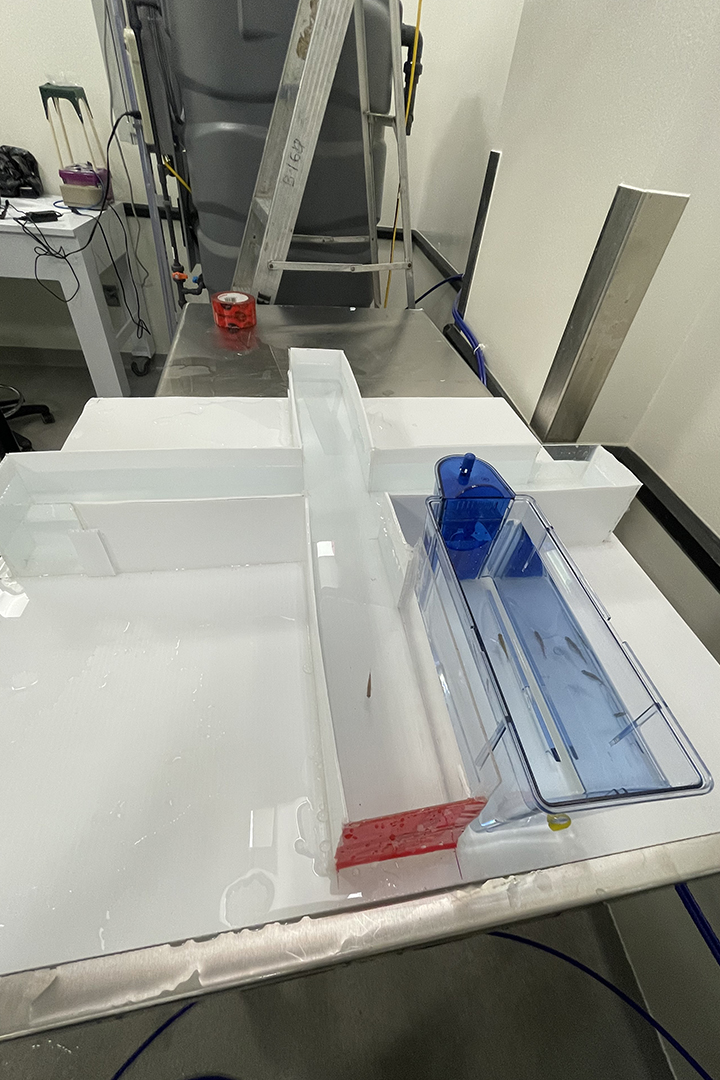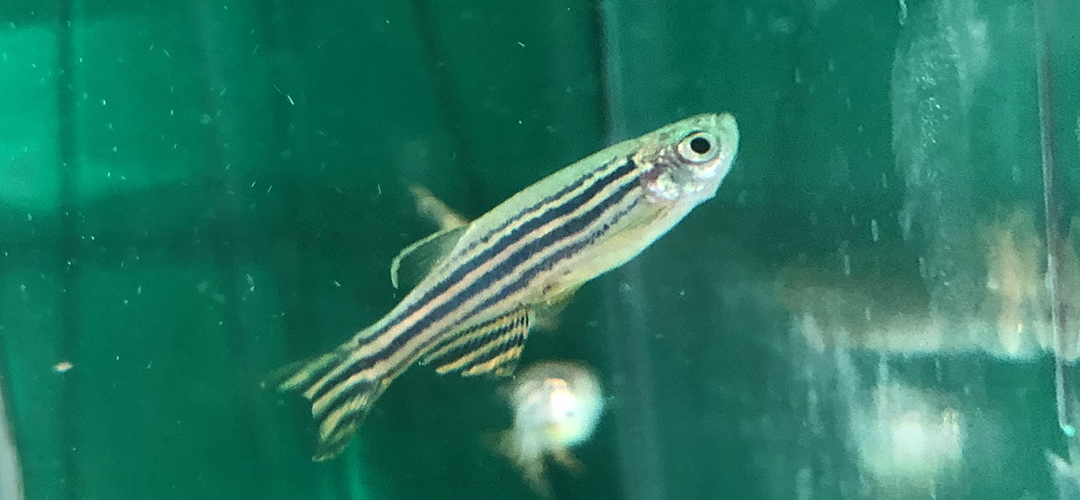Puzzle-solving zebrafish help scientists answer research questions
Almost every pet store sells zebrafish, but what pet owners may not know is that 70 per cent of this small tropical fish’s genetic structure is similar to their own.
By Himal ThapaPhoto: iStockphoto.com (Peter Verreussel) .

This similarity — along with the fact that zebrafish can produce hundreds of offspring in a short period of time and are cheap to maintain — has made the blue-and-silver striped species very popular as an experimental model in research focused on aspects of human welfare.
Since the early 1980s, the species has contributed to scientific research in pharmacology and toxicology research, social development and behavioural research, stress and anxiety research, and learning and memory research.
More recently, scientists are evaluating zebrafish’s maze learning performance to study effects of different chemicals as well as drugs, cigarette smoke and other toxins.
Maze learning performance is also helpful for studying behavioural decisions made under predation risk, which relates to the ability of organisms to recognize and respond to the threat of a predator. If their response is delayed or if there’s no response, it could lead to their death.
Zebrafish play an important role in my PhD research that I’m conducting with my supervisor, Dr. Maud Ferrari, at the University of Saskatchewan’s (USask) Western College of Veterinary Medicine. My key interest in aquatic predation and maze learning led me to look at how recent predation risk experience shapes the learning performance of zebrafish.
The aim of my experiments is to aid in studies related to learning performance and memory retention of humans who are subjected to severe trauma such as war.
Maze learning is like solving a puzzle to get a reward. The reward usually consists of food or a social incentive in which participants can see or stay closer to other members of its species. For fish, a simple maze learning experiment is comprised of a water-filled transparent maze that has different coloured “arms” or pathways. One of the maze’s arms is the reward arm that will contain the reward — such as a group of zebrafish of both sexes or food.

Fish are trained to associate a certain colour with the reward over a few days, and during the testing phase, researchers evaluate their learning performance based on the time it takes for the fish to enter the rewarded arm, the amount of time spent in the rewarded arm, and the number of entries to the rewarded arm.
So far, zebrafish have shown promising results in a handful of different maze apparatuses that have been used for predation risk studies.
For part of my research work, I exposed one group of zebrafish over several days to a chemical called “alarm cue” that’s made by mixing zebrafish skin and water. Fish in this group knew that there was a threat without having any information about the predator. Another group acted as my study’s control with no exposure to this chemical.
When a zebrafish senses the alarm cue chemical, they instantly know that their friends have been injured or eaten by a predator. In response, they show anti-predator responses such as impulsive movements, staying at the bottom of the waterbody and staying close to other zebrafish.
I then trained all the zebrafish in a maze to associate the colour red with a social reward — a chance to stay closer to a group of six zebrafish of both sexes.
I initially thought that the zebrafish exposed to predation risk (the alarm cue chemical) would perform poorly in navigating the maze. But surprisingly, the zebrafish with recent exposure to predation risk performed better in the maze exercise than the fish in our study’s control group.

My next experiment will investigate whether a change in reward — food instead of social interaction — can alter the results since the type of reward may depend on the context. For example, fish that have had a recent experience with predation risk may find a social reward more relevant. As a result, they may learn to navigate their way through the maze more quickly.
Once we combine the results of both studies, we will have a good insight on whether a different context (food versus social interaction incentives) leads to different learning outcomes.
Most studies that investigated learning performance in humans with severe traumatic experience found that these experiences hamper learning performance. However, our findings on zebrafish could be a reference point for contextual learning performance in people faced with trauma.
My research project is funded by the Natural Sciences and Engineering Research Council of Canada (NSERC) and USask.
Himal Thapa of the Aquatic Predation and Environmental Change Lab (APEC Lab) is a PhD student in the USask College of Arts and Science’s Department of Biology.
